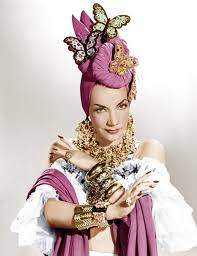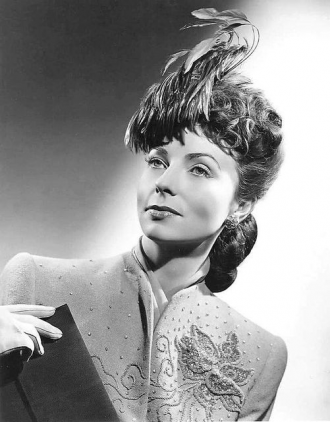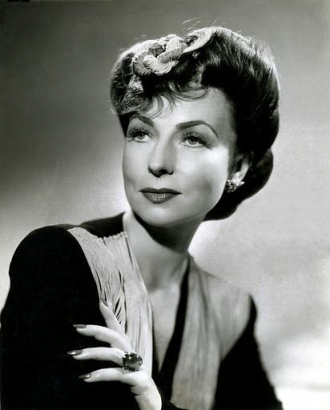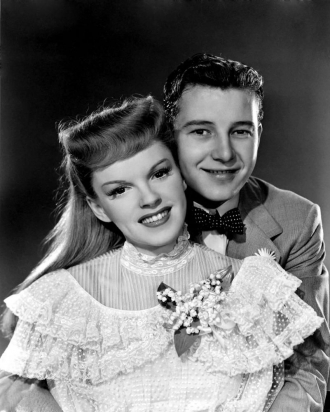Advertisement
Advertisement
Lisa Singh Nagra
About me:
I haven't shared any details about myself.
About my family:
I haven't shared details about my family.
Updated: November 21, 2020
Message Lisa Singh Nagra
Loading...one moment please


Recent Activity

Lisa Singh Nagra
updated a bio
Nov 21, 2020 12:42 PM
professional career, religious beliefs, early life & education
Active duty Army for 25 years., Sikhism, Graduate Baylor Masters program.
Active duty Army for 25 years., Sikhism, Graduate Baylor Masters program.

Lisa Singh Nagra
followed a photo
Nov 21, 2020 12:37 PM

Lisa Singh Nagra
followed a photo
Nov 21, 2020 12:37 PM

Lisa Singh Nagra
followed a bio
Nov 21, 2020 12:37 PM
Recent Comments
Lisa Singh hasn't made any comments yet
Lisa Singh's Followers
Be the first to follow Lisa Singh Nagra and you'll be updated when they share memories. Click the to follow Lisa Singh.
Favorites
Loading...one moment please




Carmen Miranda was born Maria do Carmo Miranda da Cunha on February 9, 1909, near Porto, Portugal, in the town of Marco de Canavezes. Not long after her birth her family moved to Brazil, where her father was involved in the produce business.
The family settled in the then-capital city of Rio de Janeiro. After leaving school, Carmen got a job at a local store, and began singing on the job. Before long she was discovered and got a singing job on a local radio station. She ultimately got a recording contract with RCA.
By 1928 she was a genuine superstar in Brazil. As with other popular singers of the era, she eventually made her way into the film world. She made her debut in the Brazilian documentary A Voz do Carnaval (1933). Two years later she appeared in her first feature film, Alô, Alô, Brasil (1935). However. it was Estudantes (1935) that seemed to solidify Carmen in the minds of the Brazilian movie audiences. Now they realized she could act as well as sing. Although there was three years between "Alo, Alo Carnaval" and Banana-da-Terra (1939), Carmen continued to churn out musical hits in Brazil. The latter film would be the last in her home country.
In late 1939 Carmen arrived, with much fanfare in the press, in New York City. She was now ready to capture Americans' hearts with her talent. She appeared in some musical revues on Broadway and, just as everyone thought, was a huge hit. In 1940 Carmen was signed to appear in the Twentieth Century-Fox production Down Argentine Way (1940), with Betty Grable and Don Ameche. The only complaint that critics had was the fact that Carmen was not on the screen enough.
In 1941 she was again teamed with Ameche in addition to Alice Faye in That Night in Rio (1941). The film was extremely popular with the theater patrons. Her unique songs went a long way in making her popular. It was after Weekend in Havana (1941) that American cartoon artists began to cash in on Carmen's ever-growing popularity. In the 1930s and 1940s cartoons were sometimes shown as a prelude to whatever feature film was showing. Sure enough, the cartoon version of Carmen came wriggling across the screen, complete with her trademark fruit hat and wide, toothy grin.
In 1942 Carmen starred in Springtime in the Rockies (1942) with Betty Grable and Cesar Romero, both of whom she had worked with before. It was shortly after this that America began adopting her style of dress as the latest fad. 1944 saw her in three films: Something for the Boys (1944), Four Jills in a Jeep (1944) and Greenwich Village (1944). The first two did well at the box-office, but the last one left a lot to be desired. It was her last busy year in film. Carmen made one film each in 1945, '46, '47 and '48. After that she didn't make a film for two years, until Nancy Goes to Rio (1950), a production for MGM. Once again she didn't make a film for several years, returning with Scared Stiff (1953).
She did stay busy, singing on the nightclub circuit and appearing on the relatively new medium of television. However, "Scared Stiff" was her final performance on the silver screen.
On August 4, 1955, she suffered a heart attack, although she didn't realize it at the time, during a video taping of The Jimmy Durante Show (1954). She went home after attending a party. Early the next morning, on August 5, Carmen suffered a fatal heart attack. She was just 46 years old. Her body was flown to her adopted country of Brazil, where her death was declared a period of national mourning.

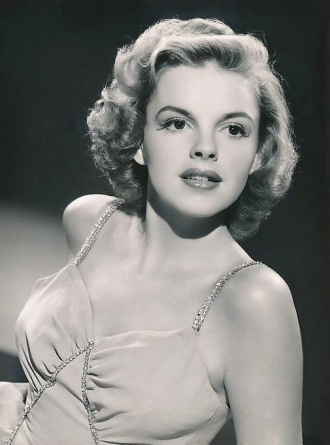
She was so close to Si Seadler that after her opening at the Palace we were invited to her party at El Morocco. She said, "Si. You have to dance with me." It was a wonderful night.
Born June 10, 1922 in Grand Rapids, Minnesota, USA
Died June 22, 1969 in Belgravia, London, England, UK (barbiturate overdose)
Birth Name Frances Ethel Gumm
Nicknames Baby Gumm
Miss Show Business
Joots
Height 4' 11½" (1.51 m)
One of the brightest, most tragic movie stars of Hollywood's Golden Era, Judy Garland was a much-loved character whose warmth and spirit, along with her rich and exuberant voice, kept theatre-goers entertained with an array of delightful musicals.
She was born Frances Ethel Gumm on 10 June 1922 in Minnesota, the youngest daughter of vaudevillians Ethel Marion (Milne) and Francis Avent Gumm. She was of English, along with some Scottish and Irish, descent. Her mother, an ambitious woman gifted in playing various musical instruments, saw the potential in her daughter at the tender age of just 2 years old when Baby Frances repeatedly sang "Jingle Bells" until she was dragged from the stage kicking and screaming during one of their Christmas shows and immediately drafted her into a dance act, entitled "The Gumm Sisters", along with her older sisters Mary Jane Gumm and Virginia Gumm. However, knowing that her youngest daughter would eventually become the biggest star, Ethel soon took Frances out of the act and together they traveled across America where she would perform in nightclubs, cabarets, hotels and theaters solo.
Her family life was not a happy one, largely because of her mother's drive for her to succeed as a performer and also her father's closeted homosexuality. The Gumm family would regularly be forced to leave town owing to her father's illicit affairs with other men, and from time to time they would be reduced to living out of their automobile. However, in September 1935 the Gumms', in particular Ethel's, prayers were answered when Frances was signed by Louis B. Mayer, mogul of leading film studio MGM, after hearing her sing. It was then that her name was changed from Frances Gumm to Judy Garland, after a popular '30s song "Judy" and film critic Robert Garland.
Tragedy soon followed, however, in the form of her father's death of meningitis in November 1935. Having been given no assignments with the exception of singing on radio, Judy faced the threat of losing her job following the arrival of Deanna Durbin.
Knowing that they couldn't keep both of the teenage singers, MGM devised a short entitled Every Sunday (1936) which would be the girls' screen test. However, despite being the outright winner and being kept on by MGM, Judy's career did not officially kick off until she sang one of her most famous songs, "You Made Me Love You", at Clark Gable's birthday party in February 1937, during which Louis B. Mayer finally paid attention to the talented songstress.
Prior to this her film debut in Pigskin Parade (1936), in which she played a teenage hillbilly, had left her career hanging in the balance. However, following her rendition of "You Made Me Love You", MGM set to work preparing various musicals with which to keep Judy busy. All this had its toll on the young teenager, and she was given numerous pills by the studio doctors in order to combat her tiredness on set. Another problem was her weight fluctuation, but she was soon given amphetamines in order to give her the desired streamlined figure. This soon produced the downward spiral that resulted in her lifelong drug addiction.
In 1939, Judy shot immediately to stardom with The Wizard of Oz (1939), in which she portrayed Dorothy, an orphaned girl living on a farm in the dry plains of Kansas who gets whisked off into the magical world of Oz on the other end of the rainbow. Her poignant performance and sweet delivery of her signature song, 'Over The Rainbow', earned Judy a special juvenile Oscar statuette on 29 February 1940 for Best Performance by a Juvenile Actor. Now growing up, Judy began to yearn for meatier adult roles instead of the virginal characters she had been playing since she was 14. She was now taking an interest in men, and after starring in her final juvenile performance in Ziegfeld Girl (1941) alongside glamorous beauties Lana Turner and Hedy Lamarr, Judy got engaged to bandleader David Rose in May 1941, just two months after his divorce from Martha Raye. Despite planning a big wedding, the couple eloped to Las Vegas and married during the early hours of the morning on 28 July 1941 with just her mother Ethel and her stepfather Will Gilmore present. However, their marriage went downhill as, after discovering that she was pregnant in November 1942, David and MGM persuaded her to abort the baby in order to keep her good-girl image up. She did so and, as a result, was haunted for the rest of her life by her 'inhumane actions'. The couple separated in January 1943.
Vincente began to mold Judy and her career, making her more beautiful and more popular with audiences worldwide. He directed her in The Clock (1945), and it was during the filming of this movie that the couple announced their engagement on set on 9 January 1945. Judy's divorce from David Rose had been finalized on 8 June 1944 after almost three years of marriage, and despite her brief fling with Orson Welles, who at the time was married to screen sex goddess Rita Hayworth, on 15 June 1945 Judy made Vincente her second husband, tying the knot with him that afternoon at her mother's home with her boss Louis B. Mayer giving her away and her best friend Betty Asher serving as bridesmaid. They spent three months on honeymoon in New York and afterwards Judy discovered that she was pregnant.
On 12 March 1946 in Los Angeles, California, Judy gave birth to their daughter, Liza Minnelli, via caesarean section. It was a joyous time for the couple, but Judy was out of commission for weeks due to the caesarean and her postnatal depression, so she spent much of her time recuperating in bed. She soon returned to work, but married life was never the same for Vincente and Judy after they filmed The Pirate (1948) together in 1947. Judy's mental health was fast deteriorating and she began hallucinating things and making false accusations toward people, especially her husband, making the filming a nightmare. She also began an affair with aspiring Russian actor Yul Brynner, but after the affair ended, Judy soon regained health and tried to salvage her failing marriage. She then teamed up with dancing legend Fred Astaire for the delightful musical Easter Parade (1948), which resulted in a successful comeback despite having Vincente fired from directing the musical. Afterwards, Judy's health deteriorated and she began the first of several suicide attempts. In May 1949, she was checked into a rehabilitation center, which caused her much distress.
She soon regained strength and was visited frequently by her lover Frank Sinatra, but never saw much of Vincente or Liza. On returning, Judy made In the Good Old Summertime (1949), which was also Liza's film debut, albeit via an uncredited cameo. She had already been suspended by MGM for her lack of cooperation on the set of The Barkleys of Broadway (1949), which also resulted in her getting replaced by Ginger Rogers. After being replaced by Betty Hutton on Annie Get Your Gun (1950), Judy was suspended yet again before making her final film for MGM, entitled Summer Stock (1950). At 28, Judy received her third suspension and was fired by MGM, and her second marriage was soon dissolved.
Spouse (5)
Mickey Deans (15 March 1969 - 22 June 1969) ( her death)
Mark Herron (14 November 1965 - 9 January 1969) ( divorced)
Sidney Luft (8 June 1952 - 19 May 1965) ( divorced) ( 2 children)
Vincente Minnelli (15 June 1945 - 29 March 1951) ( divorced) ( 1 child)
David Rose (28 July 1941 - 8 June 1944) ( divorced)

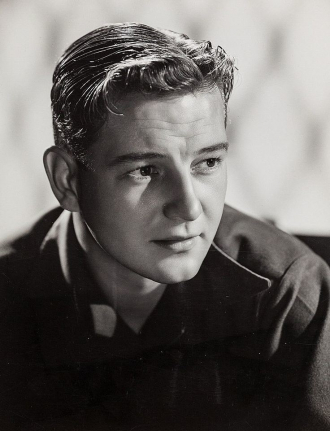
Our Town (1940) - Best Man at Wedding (uncredited) (film debut)
The Mortal Storm (1940) - Student in Second Classroom Scene (uncredited)
The Howards of Virginia (1940) - James Howard at 16
Northern Pursuit (1943) - Heinzmann (uncredited)
Two Girls and a Sailor (1944) - Frank Miller
The White Cliffs of Dover (1944) - Dying American Soldier (uncredited)
Maisie Goes to Reno (1944) - Sgt. William (Bill) Fullerton
Marriage Is a Private Affair (1944) - Bill Rice
Mrs. Parkington (1944) - Ned Talbot
Meet Me in St. Louis (1944) - John Truett
This Man's Navy (1945) - Jess Weaver
Main Street After Dark (1945) - Radio Broadcaster (voice, uncredited)
The Green Years (1946) - Robert Shannon as a Young Man
Courage of Lassie (1946) - Sergeant Smitty
Faithful in My Fashion (1946) - Jeff Compton
I'll Be Yours (1947) - George Prescott
The Beginning or the End (1947) - Matt Cochran
Cass Timberlane (1947) - Jamie Wargate
Alias a Gentleman (1948) - Johnny Lorgen
Hills of Home (1948) - Tammas Milton
Words and Music (1948) - Richard 'Dick' Rodgers
Mr. Belvedere Goes to College (1949) - Bill Chase
Scene of the Crime (1949) - Detective 'C.C.' Gordon
The Great Rupert (1950) - Peter 'Pete' Dingle
Never Trust a Gambler (1951) - Police Sgt. Ed Donovan
Disc Jockey (1951) - Johnny
FBI Girl (1951) - Carl Chercourt
Sangaree (1953) - Dr. Roy Darby
Betrayed Women (1955) - Jeff Darrell
Sudden Danger (1955) - Wallace Curtis
The Cyclops (1957) - Lee Brand
Date with Disaster (1957) - Miles Harrington
Raintree County (1957) - Bobby Drake
Money, Women and Guns (1958) - Jess Ryerson
Warlock (1959) - Abe McQuown
The Bramble Bush (1960) - Larry McFie
The Sandpiper (1965) - Walter Robinson
House of the Black Death (1965) - Paul Desard
Johnny Reno (1966) - Joe Conners
The Singing Nun (1966) - Fitzpatrick
Red Tomahawk (1967) - Bill Kane
Deadly Inheritance (1968) - Phil Sutton
Warkill (1968) - Inspector Gerard Greville
Cycle Psycho (1973) - Dick Ridelander
The Spectre of Edgar Allan Poe (1974) - Dr. Adam Forrest (final film)


Verinderpal Nagra divorced
Virginia Villarreal in 1990 and he severed ties with her.
He married Lisa Anne Goldsberry on July 4th,2003

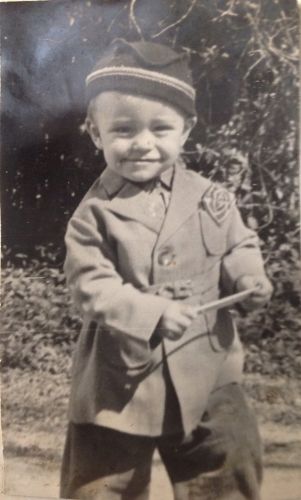
Lost & Found
Help reunite mystery or 'orphan' photos that have lost their families.
Photos with the names and dates lost in history. AncientFaces has been reuniting mystery and orphan photos with their families since we began in 2000.
This 'Lost & Found' collection is of photos foun... 
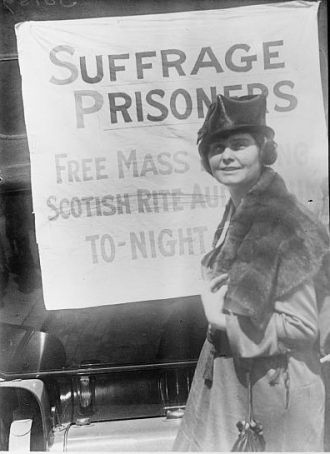
Women's Suffrage
The history of women's struggle for the right to vote.
Well into the 20th century, women in many countries did not have the right to vote. It wasn't until 1920 that women had the right to vote in the United States. This is a visual history of women's str... 
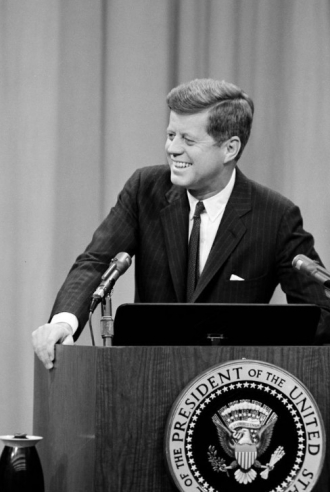
Presidents
U.S. Presidents: their official portraits and other photos showing them as you may not have seen them before.
Technically, John Hanson (who was President of the First Continental Congress) was really the first President of the United States. However, most people call George Washington "the Father of our Coun... 
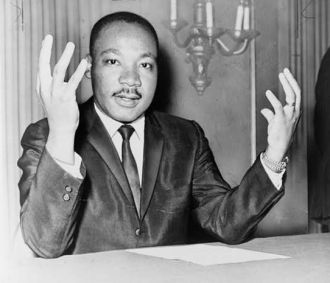
Civil Rights Movement
Images documenting the fight for equality & civil rights in the United States.
Throughout the history of the United States various groups including African-Americans, Native Americans, women, immigrant groups and more have fought for full rights.
The Civil Rights Act of 1964 w... 
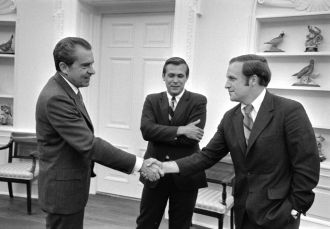
Political
Original photos of the politicians and political events throughout the past few centuries.
Welcome to a collection of photographs that document the fascinating history of politics. From democracies to monarchies, communism to fascism, and everything in between, this page captures the divers... 
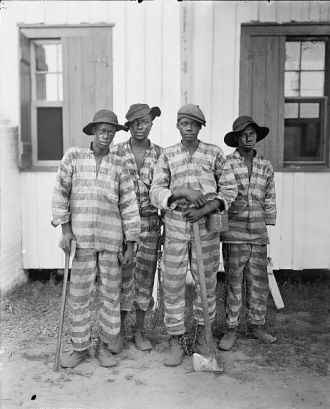
Notorious
The people and places that live on in our memories - not for good reasons but because of how they shocked and saddened.
Images of serial killers, mass murderers, despots and dictators, prisons, and the victims of these horrors. These people & places live on in infamy in our history.
There are the notorious killers: Th... 
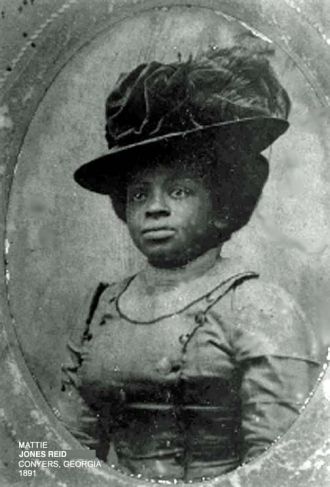
1800s
The 1800s where the end of the industrial revolution and the birth of scientists.
The Industrial Revolution began around 1760 and ran through the 1840's. Then began the birth of the profession of science. Louis Pasteur, Charles Darwin, Michael Faraday, Thomas Edison, and Nikola Te... 
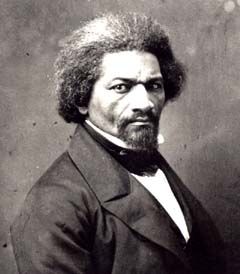
African Americans
See the faces of just some of the many African Americans who have contributed to building the United States into the country it is today.
African Americans in the early history of the United States had an extremely difficult start as immigrants. Having been primarily forced to immigrate to a new continent, African Americans worked throu... 
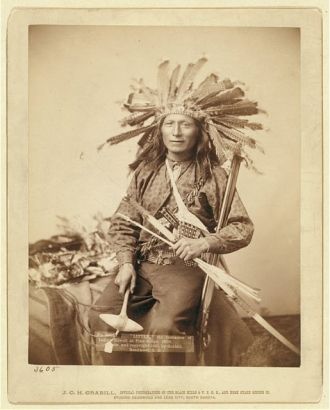
Native Americans
Images of the Native American people - the tribes, their dress, and their lifestyles. We honor and celebrate Native American history with this collection of historic photos.
The best way to understand the people who first inhabited North America, Native Americans, is through their own words. The following quotes contain some of the wisdom passed down through generations o... 
